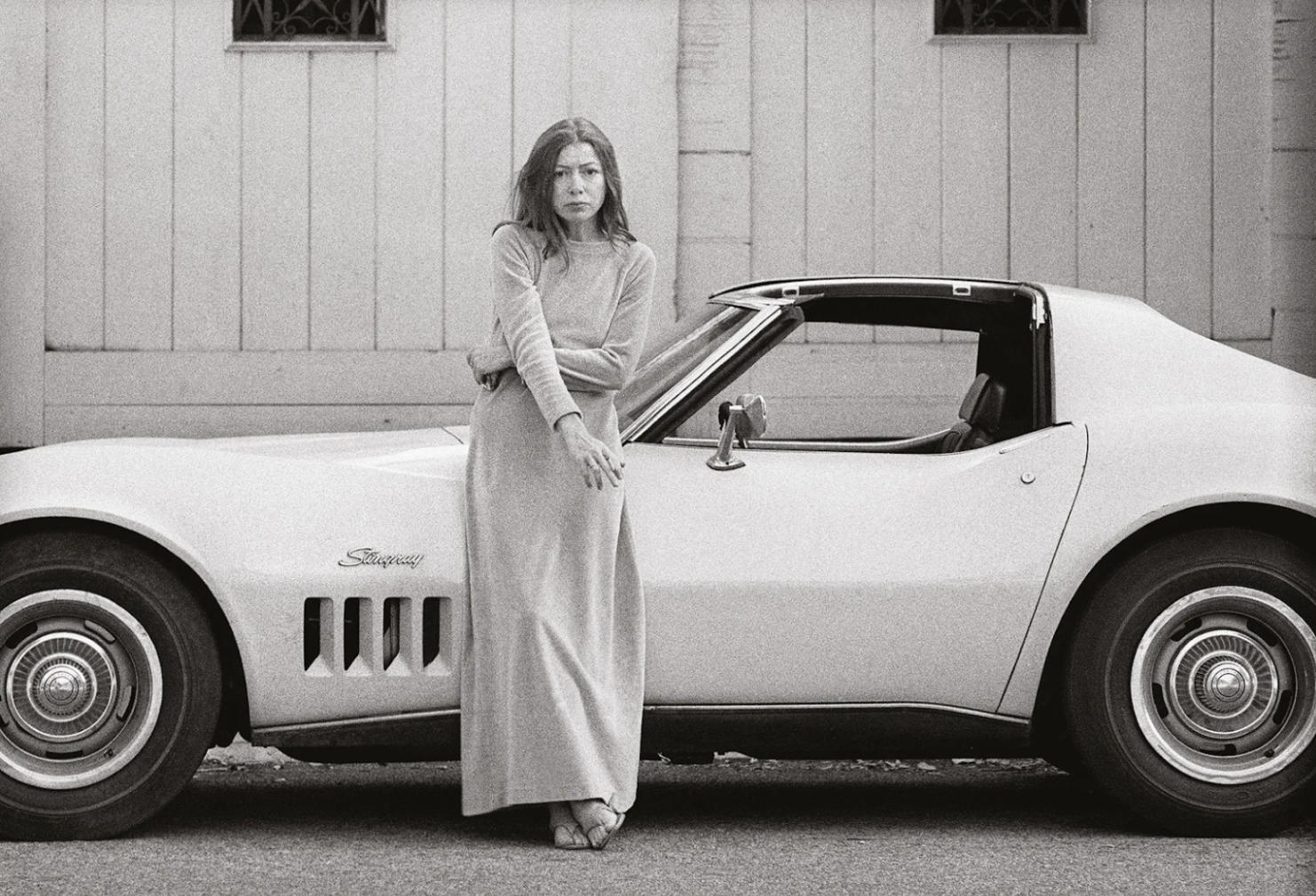Continue Reading
Biggest Finance Newsletter for Women
Join 200,000 other people interested in money, power, culture, and class.
Subscribe
As I’ve shared before on The Money with Katie Show and likewise on this very blog, I’ve had a fairly fraught relationship with materialism. I’ve gone through phases when I would’ve branded myself with the Chanel logo if given the materials and opportunity to do so, and I’ve also gone through stages when I embraced radical simplicity and frugality to the extent that I carried around a broken travel coffee mug wrapped in a can koozie because I didn’t feel it was necessary to spend $15 replacing it.
I tend to find myself binging on consumption (spending a lot of money on clothes, buying an overpriced bag, going a little wheels-off with food spending for a month or two and generating a lot of waste), then pulling back in an overcorrection wherein I swear off everything altogether.
In some ways, it’s a little bit like crash dieting: Overdo it, overcorrect, repeat. Whiplash between unhealthy extremes.
My theory about why this tends to happen? Because my internal goals and philosophies are often at odds with the cultural messaging I receive during most waking hours of my life.
It’s insidious. In a statistic that seems almost impossible, Lunio—a product designed to “analyze traffic behavior across all acquisition channels,” whatever that means—reports that, on average, we’re exposed to between 6,000 and 10,000 advertisements per day.
You’ve gotta be firmly entrenched in your desire not to spend to have willpower that can outlast 6,000 to 10,000 consumption-urging brain blasts—especially when you consider that the ads are not randomly generated, they’re hyper-targeted based on your demographics, interests, and search history across devices.
But this isn’t a post meant to criticize the always-on nature of online advertising. Instead, I want to explore the ways in which we all have to reckon with the messages of cultural consumption we’re constantly inundated with if we actually want to be happy.
Microclimates of consumption
While we can wax poetic about how overconsumption is an American ideological linchpin in general, there are dozens—if not hundreds—of subcultures throughout the US that probably influenced your own personal attitude toward consumerism.
Human beings have to find new and inventive ways to confer status on themselves and one another, and one easy way to do that is by adorning yourself in branded garb, driving around in a flashy metal box, and building your home with materials that convey you just made partner and you’re not afraid to spend like it.
The particular ways in which communities do this vary a lot, which makes this conversation difficult to generalize: Sure, I could point out that you can’t toss a rock out a window in Uptown Dallas without boinking it off the side of a G-Wagon, but that type of sentiment likely wouldn’t resonate with someone who lives in, say, Wichita, Kansas. That doesn’t mean there isn’t some means of status signaling in Kansas, it’s just not the same means of signaling.
Having lived in four different parts of the country, I can think of three distinct “consumerism microclimates” I’ve experienced—each with their own strange markers of success.
Where I grew up in Northern Kentucky, handbags by designers like Dooney & Bourke and Coach were the leather-bound talismans of the day. Being involved in some sort of expensive, elite sport (be it swimming, cheerleading, or “select soccer”) also earned you points. (I was neither athletic nor rich enough to participate, but you can bet your ass I was a devoted extra in high school plays.)
In case it’s not obvious, I grew up in a pretty solidly middle class area.
Where I went to college in Tuscaloosa, Alabama, it was Louis Vuitton bags, David Yurman jewelry, and a revolving closet of trendy game day gear. Oddly, there were certain cultural phenomena I had never heard of, too, like cotillion: the practice wherein a college-aged woman would dress up like the Princess Bride and show off her manners for a crowd of…adoring fans?
I don’t know. I still don’t get it. All I know is, it was easy to tell the rich Southern women from the not-so-rich ones, because the rich ones posted the obligatory cotillion pictures. Another strange Tuscaloosa indicator, albeit less of a wealth-signaling one: giant T-shirts. I practically burned everything Size S I owned when I arrived on campus and replaced it over the next four years with shirts I was swimming in. Evidence:

The time stamp on this picture tells me it was taken approximately 5 days after I moved to Alabama. Your girl assimilated quickly. “Laughably giant T-shirts” was practically a social experiment being conducted on the SEC, and we all gladly, unquestioningly obliged.
It wasn’t a direct signal of wealth, but it did confer status and belonging—you were “in the know.” In the “in-group.”
Where I began my career in Dallas, it was Range Rovers and boutique fitness memberships (plus, of course, the lululemon sets and thin, tan, blonde body to match). While the latter admission may sound more like a cultural physique preference, rest assured there are financial implications as well: You gotta stick to the rigorous diet, exercise, tan, and bleach schedule to achieve it, and that don’t come cheap, honey!
Even now—in Colorado—I notice a little microclimate around consumerism (or maybe, rather, the performance of the lack thereof). While it’s not as obvious as it may have been in, say, Dallas, it still exists: All you need to do is spend a Saturday at an REI to see it’s just as common. One must adopt the common trappings to really blend in: Patagonia shorts and hats, Nalgene water bottles, a Subaru, Chacos, Tevas, belt bag-style purses, an assortment of bikes outfitted specifically for whether you’re riding on a road or the side of a mountain…
I don’t mean to suggest that buying tactical gear is the same thing ideologically as buying a Range Rover for your three-mile round trip commute through the flat, scorching eight-lane thoroughfares of greater DFW—but there are miniature cultures of consumer norms everywhere, and if you dressed like a generic Northern Kentucky girl in Tuscaloosa, you’d stick out, just like if you dressed like a generic Dallas girl in Colorado.
The status signifiers I’m mentioning may not resonate with you depending on where you live in the Land of the For-Profit and Home of the Flash Sale, but my guess is you can think of a few, too.
Where “minimalism” falls short
When The Life-Changing Magic of Tidying Up came out, it felt like we were maybe on the precipice of a shift in the way we related to consumer goods and spending. Everything from the emergence of the capsule wardrobe to the growing popularity of professional organization content on social media all seemed to suggest one thing:
By paring down and organizing impeccably, you could create a better life.
(Marie Kondo had some choice words for professional organizers, though, calling them “hoarders”—so it’s not all kumbaya in KonMari Land.)
Coincidentally, embracing a minimalist attitude toward consumerism can also be good for your finances, because it’s considered more of a way of life and less of a restrictive spending diet. (The idea, of course, is that minimalism is supposed to make your life better, not worse.)
But minimalism as a movement has been criticized for being a classist dog whistle; the idea that someone could only own one of something (and that that “something” would be so well-made, durable, and high-quality that it could withstand being the only version of it that someone owned) is inherently a lifestyle choice for people who can afford to shell out the big bucks at least once per required item.
The lifestyle magazine version of a minimalist aesthetic often carries with it an emphasis on clean, neutrally colored, sleek, open spaces, which can be—surprise—relatively expensive to reproduce. (Cue the Halloween slasher music with shots of Kim and Kanye’s house and furniture that appears to be crafted out of one giant marble slab and little else.)
Minimalism is, at the end of the day, a lifestyle choice. But the spiritual side tends to ring hollow, especially when it becomes a design aesthetic to be mimicked through—you guessed it!—more consumer purchases.
Any philosophy for consumerism that ignores the philosophical underpinnings of why you’d only take what you need (and no more) will probably fall short.
As with healthcare and childcare, the Swedes might be onto something
While I am loath to reference anything dubbed a “lifestyle trend” by publications with names like Country & Town HOUSE, my Suecophilia (a love of all things Swedish; stick that one in your back pocket for a later date) simply won’t allow me to make this point without involving “lagom”—the Swedish concept for “not too much, not too little—just right.” It’s basically the Goldilocks principle: It embraces contentment that accompanies taking only what you need, and rejects excess consumption.
Crucially, the principle emphasizes what else happens when an entire culture embraces the idea of taking only what you need: You leave enough for others to be happy (and have what they need), too.
Aware that I’m tiptoeing up to the line of other fetishized life philosophies co-opted as interior design mantras (“the Japanese art of tidying up”), I’ll state it explicitly:
Lagom is an important ideological system not just because it emphasizes that you’ll be happier if you possess and consume less, but because it reinforces that it enables everyone else to have enough.
It’s a cultural belief system that emphasizes the importance of not taking more than one’s fair share, and being happy with one’s fair share—recognizing that one’s fair share is still likely more than enough.
Contrast that with the very American “more, better, newer” explanation for how to live a good life: Just own the best of everything, publications like Wirecutter tell us, and your happiness is guaranteed or your money back!
But the very notion that there is something newer, better, or “more” out there waiting for the swipe of our AmEx is precisely the thing that makes us unhappy in the first place.
The expectation that there’s something out there—some version of a thing, product, or service—that’ll give us that incremental happiness boost we need to finally live The Life We’re Supposed To Be Living makes us miserable. It’s the age-old handshake of advertising and capitalism.
When “pursuing happiness” is literally written into the fabric of your country’s national identity, it’s probably no surprise that we expect we should be happy—and in post-World War II America, the solution to said pursuit offers two-day shipping.
“It’s not having what you want, it’s wanting what you’ve got”
To quote the great 20th century philosopher Sheryl Crow, always wanting more is a recipe for disaster—and it’s a recipe that’s been hardwired into our psyches by everything from carefully calculated infomercials to targeted TikTok ads.
Maybe that’s why my materialism whiplash is so strong: Embrace, reject, embrace, reject. But being critical of our consumption habits—and adopting a spirit of “lagom”—might be the best path forward for our happiness levels and finances.
Anyway, I bought a book about lagom with two-day shipping. I’ll let you know how it is.
October 31, 2022
Looking for something?
Search all how-to, essays, and podcast episodes.
Explore
While I love diving into investing- and tax law-related data, I am not a financial professional. This is not financial advice, investing advice, or tax advice. The information on this website is for informational and recreational purposes only. Investment products discussed (ETFs, index funds, etc.) are for illustrative purposes only. It is not a recommendation to buy, sell, or otherwise transact in any of the products mentioned. Do your own due diligence. Past performance does not guarantee future returns.
Money with Katie, LLC.
Terms & Conditions | Privacy Policy
This Site Was Built by Brand Good Time



